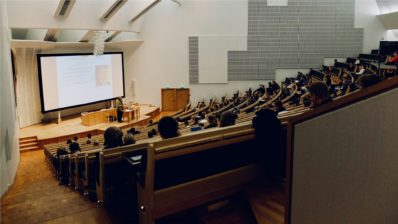“Things You Would Never Believe: From Science Fiction to Neuroscience“, the most recent book by physicist and neuroscientist Rodrigo Quian Quiroga, is a walk through the big questions of philosophy through classic science fiction films and the most recent and exciting advances in neuroscience. Advances that increasingly reduce the “fiction” part and bring us closer to futures that would once seem impossible.
In the first chapter, the author takes us back to the classic “2001: A Space Odyssey“, from the HAL computer to the artificial intelligence (AI) that won 4 to 1 against one of the masters of Go, the ancient Chinese strategy game. In doing so, he reflects on whether machines will one day have the same intelligence as humans, understood as our common sense and ability to approach problems in different ways, our analytical capacity.
Through “Blade runner”, the second chapter asks whether a machine can think and become conscious of its existence – even as we still cannot explain what consciousness really means… The author, currently a researcher at the Hospital del Mar Research Institute, was the discoverer of concept neurons and believes that it is precisely these that are linked to our consciousness and our ability to abstract and generalise, to apply what we have learned in one task to another – in essence, what makes us truly human.
In the third chapter, “Planet of the Apes“, Quiroga moves from machines to animals to ask similar questions. We now know that animals are much more intelligent than we once thought, but are they conscious? Do they ask themselves questions? Can they reason? Although he shows us some examples of animals with extraordinary abilities, even to put themselves in another individual’s shoes and understand how they think in order to act accordingly, the author argues once again that the capacity for abstraction is unique to humans.
“The Matrix” is another classic science fiction film, a film that revisits an idea as old as that proposed by Plato in his allegory of the cave. Does what we see really exist?
“Until the End of the World” is the film that takes the author’s questions one step further. If the mind is nothing more than the result of the activation of millions of neurons, can we read the mind by measuring brain activity? Perhaps we can’t yet, or never will, in a very concrete way, but science has already shown that it is possible to roughly predict what a person is seeing or thinking through magnetic resonance imaging of their brain activity.
The sixth chapter looks to the future – can we predict the future actions of an individual, as they do in “Minority Report“? Is everything predetermined? Are we really free? Reflecting on what the author calls the illusion of free will, he takes the opportunity to tell us about experiments which show that decisions can be manipulated without people realising it.
Quiroga uses the premise of “Robocop” to talk about recent advances in neuroscience that give us a glimpse of the possibility of using neural prostheses to restore (or even enhance) the senses. The film also raises questions about the meaning of identity (is a biomechanical arm still part of us, of our identity?).
The film “Inception“, as it could not be otherwise, gives rise to an analysis of dreams, their function and the role of the brain and memory in them. We already know that sleep (especially the beginning of sleep, the non-REM phase) plays a key role in strengthening memory. But what about dreams? Quiroga argues, based on recent studies, that dreams (mostly in the REM phase) help us to put new memories into context, and therefore not only to remember, but also to learn.
Quiroga argues in previous chapters that our identity depends on our memory, on our remembrances. But he also shows us how malleable our memory can be. Could new memories be implanted in our brains and change our personalities? The manipulation and implantation of memory is what the author discusses in the chapter dedicated to the film “Total Recall“.
“Open Your Eyes” closes the book with one of the themes that has always fascinated mankind: immortality. Could we one day, as in Amenábar’s film, preserve our brain and thus perpetuate ourselves beyond death? And would we retain our identity?
In more than 300 pages, Quiroga shows the different answers given to this and other questions throughout the history of philosophy, contrasting them with the discoveries of neuroscience in recent decades. These discoveries are increasingly blurring the line between science and fiction, but they do not alter the premise with which the researcher concludes the book: we are not immortal, and death actually gives us an urgency to live and enjoy the time we have left.
For example, by reading a book such as this one.







